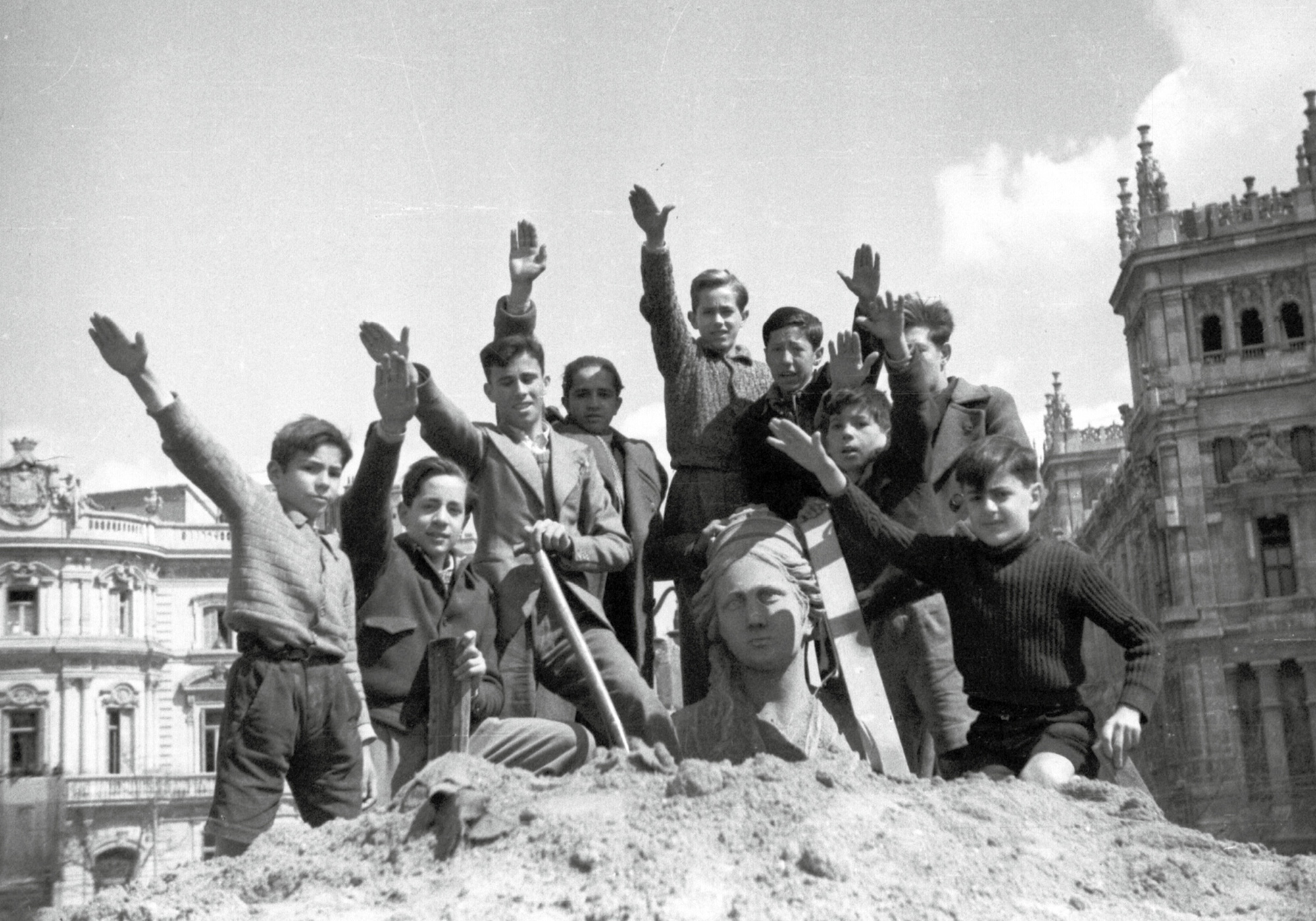Protection and Negation
The fate of Madrid’s monuments during the Spanish Civil War
Miguel Caballero

Making monuments disappear was a modernist fantasy, and its history has an unexplored chapter in the Spanish Civil War.[1] During the siege of Madrid, the Republican government protected the city’s monuments from aerial bombardment by building bunker-like structures around them, utilizing sandbags and wood-and-brick frames. Other European cities would resort to similar methods to protect their monuments during World War II, but the Madrid plan remains exemplary, not only because it was the first, but because of its unique implications for politics and aesthetics.
The people who directed Madrid’s monument-protection scheme were not bureaucrats or military men; they were avant-grade architects. Dismissing those who wanted to disassemble and store the city’s fountains and statues, they decided to cover the city’s monuments with elaborate geometric structures. Bunker-like forms obscured Madrid’s most iconic monuments, with highly ambiguous results. On the one hand, the architects’ intervention transformed Madrid’s landscape, echoing the ultramodern cities depicted in aspirational Republican propaganda. On the other hand, the negation of the city’s most traditional monuments made them more present than ever. The ambiguity of the resulting cityscape, full of geometric structures hiding monuments within, asks that we reconsider both the modernist movement’s notions of preservation and its relationship to academicism.
• • •
18 July 1936: The most conservative sections of the military, with the economic support of oligarchs and reactionaries, rose up in arms under the leadership of General Francisco Franco. Their coup d’état—motivated by their antipathy toward the frenetic political, social, and cultural changes effected by the government of the Second Spanish Republic, begun in 1931 and ratified by the victory of the Popular Front in February 1936—succeeded in some Spanish cities, but failed in Madrid, triggering a civil war. The fronts quickly converged, and Franco’s forces began a siege of Madrid that lasted from November 1936 until the end of the war, in 1939. As Nationalist troops surrounded the city, Germany’s Legion Condor and Italy’s Aviazione Legionaria—Hitler and Mussolini were both supporting Franco—subjected the capital to periodic bombing. At the beginning of the siege, in a gesture that many interpreted as flight, the Republican government moved to Valencia, and a military Defense Board took control of Madrid, with the aim of defending the city at any price. The fate of Spain would rest on making sure the capital held out against Franco and the Nationalist forces.